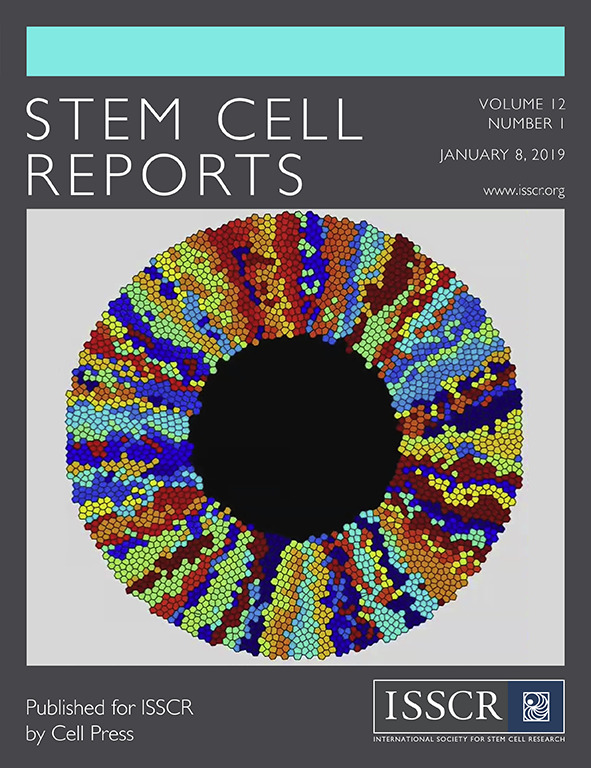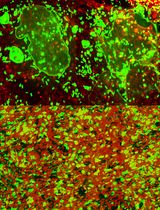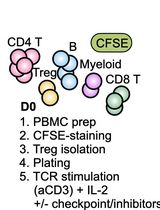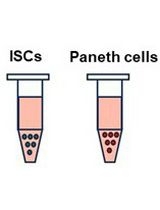- EN - English
- CN - 中文
Co-culture of Human Stem Cell Derived Neurons and Oligodendrocyte Progenitor Cells
人干细胞源性神经元与少突胶质祖细胞的共培养
(*contributed equally to this work) 发布: 2019年09月05日第9卷第17期 DOI: 10.21769/BioProtoc.3350 浏览次数: 9028
评审: Giusy TornilloJingwen YuNarayan Subramanian
Abstract
Crosstalk between neurons and oligodendrocytes is important for proper brain functioning. Multiple co-culture methods have been developed to study oligodendrocyte maturation, myelination or the effect of oligodendrocytes on neurons. However, most of these methods contain cells derived from animal models. In the current protocol, we co-culture human neurons with human oligodendrocytes. Neurons and oligodendrocyte precursor cells (OPCs) were differentiated separately from pluripotent stem cells according to previously published protocols. To study neuron-glia cross-talk, neurons and OPCs were plated in co-culture mode in optimized conditions for additional 28 days, and prepared for OPC maturation and neuronal morphology analysis. To our knowledge, this is one of the first neuron-OPC protocols containing all human cells. Specific neuronal abnormalities not observed in mono-cultures of Tuberous Sclerosis Complex (TSC) neurons, became apparent when TSC neurons were co-cultured with TSC OPCs. These results show that this co-culture system can be used to study human neuron-OPC interactive mechanisms involved in health and disease.
Keywords: Human iPSC (人类诱导性多能干细胞)Background
The human brain consists of an immense complex organization of cells that we are only recently starting to identify, and that cannot be studied in animal models. The human brain also contains a high white matter content, which is suggested to account for higher brain functions, such as social and cognitive learning (Maldonado and Angulo, 2015; Almeida and Lyons, 2016; Kougioumtzidou et al., 2017). Single cell expression studies in animals indicate that oligodendrocytes form heterogeneous populations of cells (Marques et al., 2016). This supports the notion that oligodendrocytes fulfill more complex functions than solely isolating axons. As the human comprises of higher diversity of neurons compared to rodent brain, and considering the role of white matter in complex functions in learning and cognition, we could expect an even more complex diversity of oligodendrocyte lineage cells in the human brain. Therefore, we need to identify oligodendrocyte-neuron crosstalk in the human brain. Next to the classic white matter disorders, such as multiple sclerosis and the leukodystrophies (van der Knaap and Bugiani, 2017), white matter abnormalities are consistently been found in psychiatric disorders (Haroutunian et al., 2014). Increasing evidence shows that crosstalk between neurons and oligodendrocytes is important for proper neural network functioning (Bergles et al., 2000; Velez-Fort et al., 2010; Maldonado and Angulo, 2015) and myelin formation (Almeida and Lyons, 2016; Kougioumtzidou et al., 2017). Therefore, to study the involvement of neuron-oligodendrocyte interactions in the normal and diseased brains, we are in need of human-based model systems. As current assays mostly involve non-human cells (Cui et al., 2010; Hill et al., 2014; Clark et al., 2017; Pang et al., 2018; Treichel and Hines, 2018), we developed human induced pluripotent stem cell (iPSC)-based co-culture models to study crosstalk between human neurons and human oligodendrocyte progenitor cells (OPCs). The presented co-culture method was used to study neuron-OPC interactions in Tuberous Sclerosis Complex (TSC) (Nadadhur et al., 2019), a genetic multisystem disorder that shows both grey and white matter abnormalities in the brain. Although some neuronal abnormalities were present in mono-cultures of TSC neurons, in the presence of OPCs increased axonal density and hypertrophy became apparent (Nadadhur et al., 2019). This suggests that specific neuronal phenotypes can only be studied when oligodendrocytes are present. Vice versa oligodendrocyte maturation is highly dependent on neuronal signaling. Therefore these culture systems can be applied to study multiple processes in health and disease in which complex neuron-oligodendrocyte interactions are involved, and provide prospects for the development of drug screening platforms for all-human cells, e.g., patient iPSCs. To conclude, this novel human neuron-OPC co-culture model can be used to study neuron-OPC crosstalk in health and disease.
Materials and Reagents
- 12-well plate (VWR, catalog number: 665180)
- 10 μl filter tips (Thermo Fisher, catalog number: 11977714)
- 100 μl filter tips (Thermo Fisher, catalog number: 11953466)
- 1000 μl filter tips (Thermo Fisher, catalog number: 11973466)
- 6-well plate (VWR, catalog number: 734-2323)
- 18 mm coverslips (VWR, catalog number: 631-0153)
- 5 ml pipette (VWR, catalog number: 606180)
- 10 ml pipette (VWR, catalog number: 607180)
- 15 ml tube (VWR, catalog number: 525-0400)
- Microscope slide (VWR, catalog number: 631-0108)
- Syringe needle (BD Biosciences, catalog number: 300400)
- 4’,6-Diamidino-2-Phenylindole (DAPI) (Sigma-Aldrich, catalog number: D9542-5MG)
- Accutase (Merck-Millipore, catalog number: sf006)
- Anti-MAP2 antibody (Abcam, catalog number: AB5392)
- Anti-MBP antibody (Covance, catalog number: SMI-99P)
- Anti-Olig2 antibody (Merck-Millipore, catalog number: AB9610)
- Anti-SMI312 antibody (Eurogentec, catalog number: SMI-312P-050)
- Arabinosylcytosine (AraC) (Merck-Millipore, catalog number: 251010)
- β-mercaptoethanol (Thermo Fisher Scientific, catalog number: 21985023)
- B27 with vitamin A (Thermo Fisher Scientific, catalog number: 17504-044)
- B27 without vitamin A (Thermo Fisher Scientific, catalog number: 12587-010)
- Basic fibroblast growth factor (bFGF) (Peprotech, catalog number: 100-18B-50ug)
- Brain-derived neurotrophic factor (BDNF) (Peprotech, catalog number: 450-02)
- Biotin (Sigma-Aldrich, catalog number: B4501-100MG)
- Bovine Serum albumin (BSA) (Sigma-Aldrich, catalog number: A9418)
- Cyclic adenosine monophosphate (cAMP) (Sigma, catalog number: D0260-5MG)
- Defined Trypsin Inhibitor (DTI) (Thermo Fisher Scientific, catalog number: R007100)
- DMEM/F12 with Glutamax (Life Technologies, catalog number: 21331-020)
- DMEM/F12 without L-glutamine (Life Technologies, catalog number: 21331-046)
- Dimethylsulfoxide (DMSO) (Sigma-Aldrich, catalog number: D2650)
- Dorsomorphin (Tocris Bioscience, catalog number: 3093/10)
- Epidermal growth factor (EGF) (Peprotech, catalog number: AF-100-15-500ug)
- Ethylenediaminetetraacetic acid (EDTA) (Invitrogen, catalog number: 15575-038)
- Fetal Bovine Serum (FBS) (ThermoFisher Scientific, catalog number: 16140063)
- Fluoromount G (Southern Biotech, catalog number: 0100-01)
- Glial-cell derived neurotrophic factor (GDNF) (Peprotech, catalog number: 450-10)
- Geltrex (Life Technologies, catalog number: A1413302)
- Glutamax (Thermo Fisher Scientific, catalog number: 35050-038)
- Goat anti-rat/mouse/rabbit/chicken/guinea pig Alexa Fluor antibodies (Life Technologies)
- Heparin (Sigma-Aldrich, catalog number: H3393-50KU)
- HEPES (Thermo Fisher Scientific, catalog number: 15630-056)
- Human Sonic Hedgehog (hSHH) (Peprotech, catalog number: 100-45-500ughSHH)
- Insulin-like growth factor 1 (IGF1) (Peprotech, catalog number: 100-11-100ug)
- Insulin (Sigma-Aldrich, catalog number: I9278)
- KCl (Sigma-Aldrich, catalog number: P5405-250gr)
- KH2PO4 (Sigma-Aldrich, catalog number: P5379)
- L-glutamine (Thermo Fisher Scientific, catalog number: 25030-024)
- Mouse laminin (mLaminin) (Sigma-Aldrich, catalog number: L2020-1mg)
- N2 supplement (Thermo Fisher Scientific, catalog number: 17502-048)
- Na2HPO4 (Sigma-Aldrich, catalog number: S7907-500gr)
- NaCl (VWR, catalog number: S9888-1Kg)
- Neurobasal medium (Thermo Fisher Scientific, catalog number: 21103-049)
- Neurotrophin 3 (NT3) (Peprotech, catalog number: 450-03-100ug)
- Noggin (Peprotech, catalog number: 120-10C)
- Non-essential amino acids (NEAA) (Thermo Fisher Scientific, catalog number: 11140-035)
- Normal goat serum (NGS) (Life Technologies, catalog number: 16210-064)
- Penicillin/streptomycin (Pen/Strep) (Sigma-Aldrich, catalog number: P0781)
- Paraformaldehyde (PFA) 16% (Electron Microscopy Sciences, catalog number: 15710-S)
- Poly-L-ornithine (PLO) (Sigma-Aldrich, catalog number: P3655-100mg)
- Rock Inhibitor (RI) (Y27632; Selleckchem, catalog number: S1049)
- Retinoic Acid (RA) (Sigma-Aldrich, catalog number: R2625-100MG)
- SB431542 (Selleckchem, catalog number: S1067)
- Triiodothyronine (T3) (Sigma-Aldrich, catalog number: T6397-100MG)
- TeSRE8 (Stem Cell Technologies, catalog number: 5940)
- Triton X-100 (Sigma-Aldrich, catalog number: T8787-100ml)
- TryplE (Life Technologies, catalog number: 12563-029)
- Valproic acid (VPA) (Sigma-Aldrich, catalog number: P4543-10G)
- Vitamin C/Ascorbic Acid (Sigma-Aldrich, catalog number: A4544-25G)
- N1 supplement (Sigma-Aldrich, catalog number: N6530-5ML)
- Neuroglia co-culture medium (see Recipes)
- Neural Maintenance Medium (NMM) with Vitamin A (see Recipes)
- Neural Maintenance Medium (NMM) without Vitamin A (see Recipes)
- N2 medium (see Recipes)
- NB medium (see Recipes)
- Blocking Buffer (see Recipes)
- PBS (see Recipes)
- PLO/mLaminin coating (see Recipes)
- Geltrex coating (see Recipes)
Equipment
- Pipette controller (BD Biosciences, model number: Falcon Express)
- Incubator (Binder, model number: 9140-0044; 5% CO2, 20% O2)
- Tabletop Centrifuge (Eppendorf, model number: centrifuge 5810)
- -80 °C freezer (Thermo Fisher Scientific; model number ULT1786-6-V49)
- Bright field microscope (Zeiss, model number: Axiovert 40C.)
- Fluorescent microscope (Leica Microsystems, model number: Leica DM6000B)
Software
- Columbus 2.5 online software (Perkin Elmer)
- Leica Application Suite Advanced Fluorescence (Leica)
Procedure
文章信息
版权信息
© 2019 The Authors; exclusive licensee Bio-protocol LLC.
如何引用
Dooves, S., Nadadhur, A. G., Gasparotto, L. and Heine, V. M. (2019). Co-culture of Human Stem Cell Derived Neurons and Oligodendrocyte Progenitor Cells. Bio-protocol 9(17): e3350. DOI: 10.21769/BioProtoc.3350.
分类
神经科学 > 细胞机理 > 髓磷脂
干细胞 > 多能干细胞 > 细胞分化
细胞生物学 > 细胞分离和培养 > 共培养
您对这篇实验方法有问题吗?
在此处发布您的问题,我们将邀请本文作者来回答。同时,我们会将您的问题发布到Bio-protocol Exchange,以便寻求社区成员的帮助。
Share
Bluesky
X
Copy link












